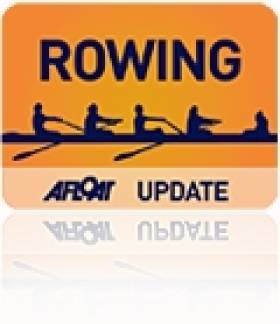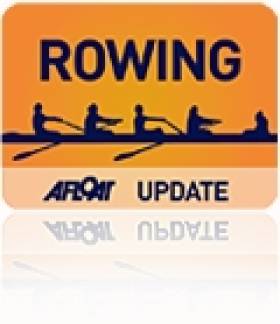Displaying items by tag: Barry
Ireland Rowing Crews Find Going Tough in Repechages
#ROWING: The repechage route did not prove a fruitful one for Ireland crews at the European Junior Rowing Championships in Hazewinkel in Belgium. The men’s double of Conor Carmody and David O’Malley were competitve until halfway, but they needed to finish in the top two and missed out by finishing fourth. They will go on to a C/D semi-final tomorrow. The men’s pair of David and Brian Keohane and single sculler Erin Barry both finished fifth. They go directly to their C Finals.
European Junior Rowing Championships, Hazewinkel, Belgium (Irish interest):
Men
Pair – Heat Two (First Two Directly to A/B Semi-Finals: 5 Ireland (D Keohane, B Keohane) 7:30.39. Repechage: 5 Ireland 7:34.21
Double Sculls – Heat Three (First directly to A/B semi-finals): 4 Ireland (C Carmody, D O’Malley) 6:56.91. Repechage: 4 Ireland.
Women
Double Sculls – Heat One (First Two Directly to A/B Semi-Finals): 2 Ireland (J English, E Lambe) 7:54.10.
Single Sculls – Heat Three (First Two directly to A/B Semi-finals): 5 Ireland (E Barry) 8:38.33. Repechage: 5 Barry 9:05.20.
#ROWING: A team of seven athletes have been selected to represent Ireland at the European Junior Rowing Championships in Hazelwinkel, Belgium on May 24th and 25th. This is the first time Rowing Ireland has sent a team to compete at this event.
The team is:
Junior Women’s Single Scull: Erin Barry, Bann RC.
Junior Women’s Double Scull: Eimear Lambe, Commercial RC and Jasmine English, Belfast BC
Junior Men’s Double Scull: David O’Malley, St Michaels RC and Conor Carmody, Shannon RC
Junior Men’s Pair: David Keohane and Brian Keohane, Presentation College RC
All seven athletes represented Ireland in 2013. Erin Barry, Jasmine English, David O’Malley and Conor Carmody competed at the Junior World Rowing Championships, while Eimear Lambe, David Keohane and Brian Keohane were chosen for the Coupe de la Jeunesse, a European tournament. This year’s World Junior Rowing Championships and Coupe de la Jeunesse both take place in August.






























































